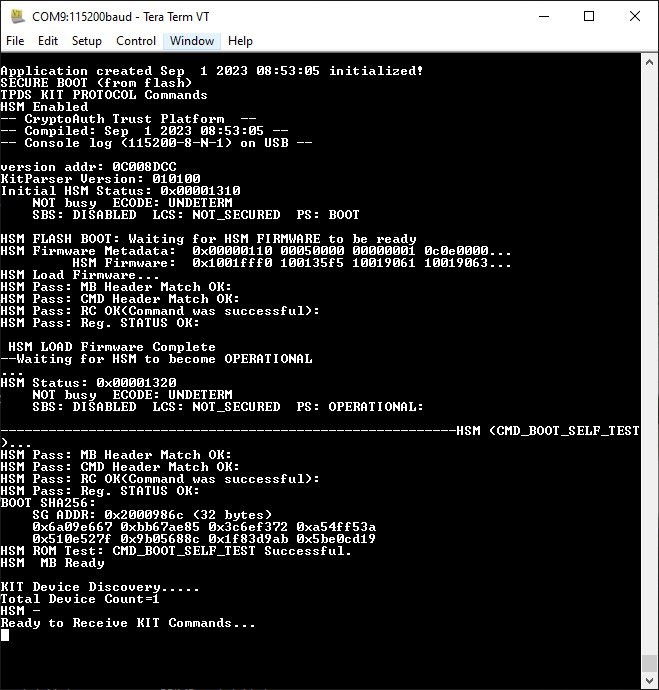1.1 PIC32CK_SG01 Key Provisioning in Trust Platform Design Suite
Install TPDS:
- Download TPDS application and install.
- See Installation Instruction
Install TPDS extension (pic32ck_sg01 key provisioning) using python wheel:
Download this python wheel file (xt_provisioning_pic32cksg01-1.0.0-py3-none-any.whl) and make a zip folder of this. Then follow the below steps to install provisioning extension in TPDS.
- Launch TPDS application.
- Navigate to Packages -> Package Manager.

- Click on "Install TPDS Extension".
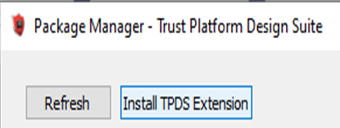
- Navigate to python wheel zip folder location, select file to install and click
on Open.

- Accept License Agreement to continue with installation.
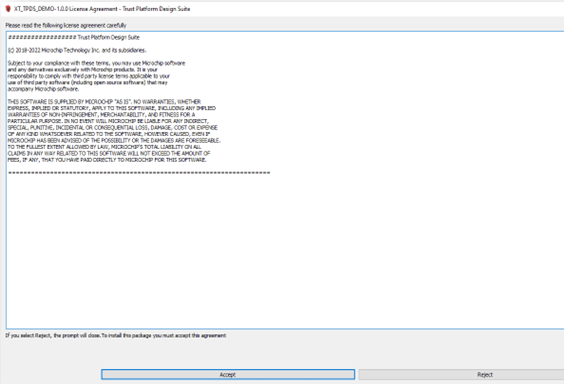
- Wait for installation to complete (wait for Close button to get highlighted).
- Click on Close. Close Package Manager and Restart TPDS Application.

- This use case should be presented and can be run in the TPDS environment. Click
on Provisioning under Use Cases and then from TrustFlex to start the key
provisioning use case.
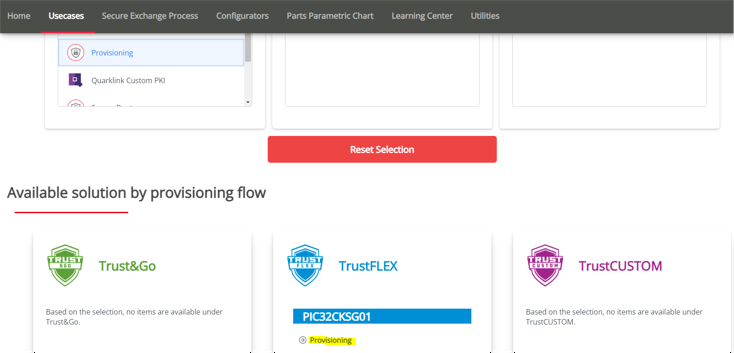
- Below are the use case steps for
pic32ck_sg01 key provisioning. Click steps 1 through 5 to run the use case. If
the board is not programmed with Kit Protocol, click Step 6, to program the kit
protocol and then run the use case from step 1 through 5.
- Use Case transaction
diagram:
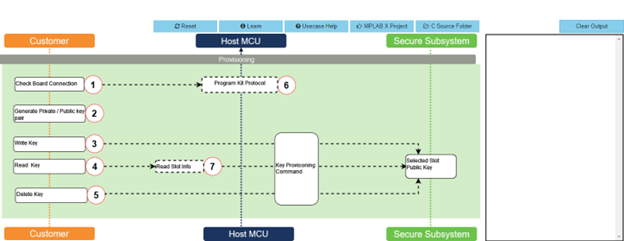
- Use case Implementation
steps:
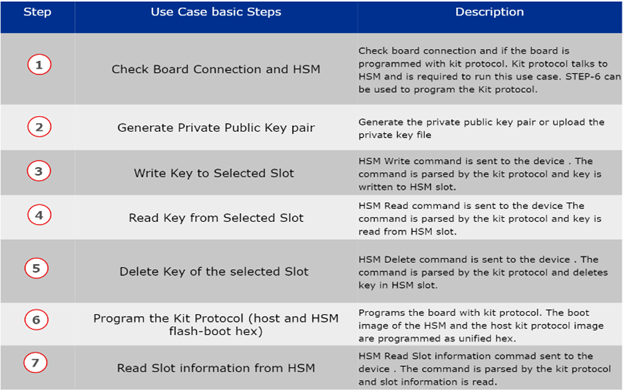
- Use Case transaction
diagram:
Setup requirements
- PIC32CK SG01 Curiosity Ultra (EA14V17A)
- MPLAB X IDE and v6.15 or above
Pre Usecase transaction Steps
- Connect PIC32CK SG01 Curiosity board to PC running Trust Platform Design Suite. Power the board through barrel jack (Vin). It is required to connect both USB0 and DEBUG USB to PC.
- Ensure MPLAB X Path is set in File -> Preference under System Settings. This
helps
- To program the Usecase prototyping kit by TPDS using MPLAB X IPE
- To open the embedded project of the Usecase
- Note that ~/.trustplatform/ pic32ck_sg01_provisioning’ is the Usecase working directory. It contains the resources generated during transaction diagram execution.
Post Usecase transaction Steps
- Log from the HSM provisioning can be viewed using applications like TeraTerm. Select the COM port and set baud rate as 115200-8-N-1.
Troubleshooting
Programming Kit Protocol:
The board must be programmed with Kit Protocol to run this use case. The Kit Protocol is the combined image of "host_kit_protocol.hex" and "hsm_flash_ boot.hex" images. The hex images are under '.trustplatform-> pic32ck_sg01_provisioning'. Make sure the DEBUG USB must be connected to PC for programming.
Programming might be inconsistent in TPDS platform. Please find below for different options to program the kit protocol.
- Using IPE to program the kit
protocol:
- The 'combined_image' (Kit Protocol) under ".trustplatform-> pic32ck_sg01_provisioning" can be programmed using MPLAB X IPE. The MPLAB X IPE gets installed with MPLAB X IDE. Open MPLAB X IPE GUI to program the combined_image
- Using MPLAB X IDE to program
the kit protocol:
- The 'host kit
protocol' and 'hsm flash boot' images can be programmed
individually. The host kit protocol firmware is under
'.trustplatform-> pic32ck_sg01_provisioning->firmware'. The
project can be opened and programmed from MPLAB X IDE.
The flash boot must be programmed using IPE or by creating new 'prebuilt hex MPLAB X project' and adding the hsm_flash_boot.hex, before programming the host kit protocol.
- The 'host kit
protocol' and 'hsm flash boot' images can be programmed
individually. The host kit protocol firmware is under
'.trustplatform-> pic32ck_sg01_provisioning->firmware'. The
project can be opened and programmed from MPLAB X IDE.
Serial Output after programming Kit Protocol:
- Select the COM port and set baud rate as 115200-8-N-1
